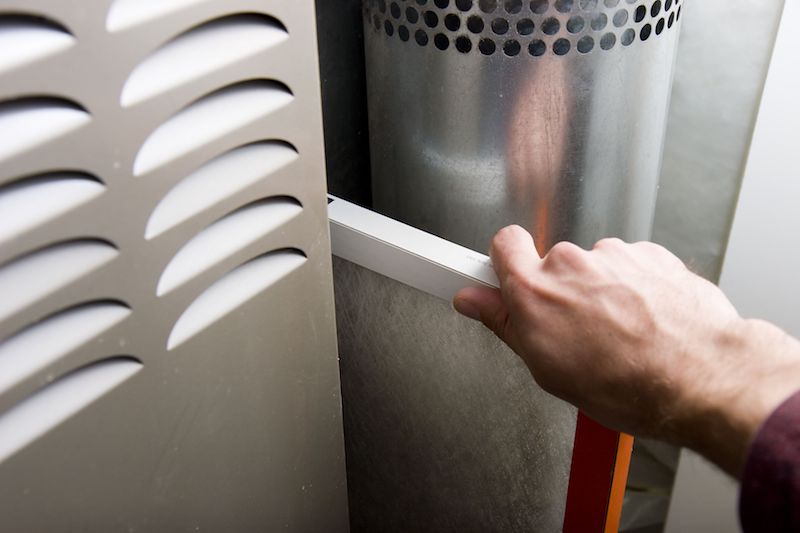
If you’re unsure whether your Toledo residence has poor indoor air quality (IAQ), it probably does.
We are indoors a lot. In reality, we’re inside up to 90% of the time, according to the U.S. Environmental Protection Agency. And the air inside houses could be 2–5 times more contaminated than outdoors, which might create long-term health concerns.
Most Common Sources of Unsatisfactory IAQ
We’ve compiled a list of the most frequent causes of inferior IAQ, the problems they create and how you can fix these indoor air pollutants. If you’re concerned about the air inside your house, we recommend talking with a professional like Northwest Services about which solutions are best for your family.
Volatile Organic Compounds
Volatile organic compounds, or VOCs, are vapors released by everyday household items.
They’re found in paint and stains in addition to:
- Furniture
- Carpet
- Building materials
- Cleaning products
- Cosmetics
- Air fresheners
- Candles
When these chemicals accumulate indoors, they can irritate your eyes, nose and throat. They can also cause headaches and nausea. Regardless of whether your residence is in a rural or industrial area, an EPA study found indoor levels of these pollutants can be 2–5 times worse than the air outside.
Always adhere to the manufacturer’s guidelines when painting or cleaning. Cracking a window can help chemicals disperse faster.
Air purification systems can also help. This system partners with your heating and cooling system to clean indoor air. When looking for a model, ensure it’s specifically designed to eliminate VOCs.
Dust and Pet Dander
Dust and pet dander can irritate health problems like asthma and allergies, especially when it continually gets moved by your house’s comfort system. While you can vacuum more routinely and buy an improved air filter, an air filtration system could be a better fit.
This unit hooks to your heating and cooling equipment to deliver strong filtration. Some models offer hospital-level filtration for getting rid of particles and bioaerosols.
Lingering Odors
New homes are tightly sealed to boost energy efficiency. While this is fantastic for your utility bill, it’s not ideal for your IAQ.
Stale odors can hang around for a greater amount of time since your home is pulling in a smaller amount of fresh air. As keeping your windows open all the time isn’t doable, here are two ways you can make your indoor air smell cleaner.
An air purification system is put in your HVAC system to eliminate odors before they recirculate. Find one with a carbon filter and the capability to break down harmful VOCs. These units can also help keep your loved ones healthy by eliminating most bacteria and normal allergy triggers like pollen and mold spores.
A ventilation system pulls out stuffy indoor air and substitutes it with crisp outdoor air. There are two types of systems (heat recovery and energy recovery), so check with our professionals for more details on which type is right for your house.
Uneven Humidity
It’s critical your house’s humidity stays even. Air that has too much moisture can lead to mold, while dry air can create respiratory issues.
Our technicians suggest 40–50% for ideal comfort. To keep yours steady, consider getting a whole-home humidifier or whole-home dehumidifier with your heating and cooling system.
In place of having to lug a humidifier from room to room, this product delivers even humidity throughout your house.
Carbon Monoxide
Carbon monoxide is colorless gas you can’t smell. It’s caused by insufficient combustion in fuel-burning appliances, like gas heating systems, water heaters or fireplaces.
It creates a serious health risk. In small levels, it can lead to flu-like symptoms like headaches and nausea. It can be fatal in big levels.
We suggest yearly furnace maintenance to ensure your system is running like it should. This work allows our specialists to pinpoint problems before they begin, including malfunctions that can cause carbon monoxide leaks.
The best approach to keep your house free of carbon monoxide is to get detectors. These alarms should be on each floor close to bedrooms and living spaces.
Better Your Home’s Air Quality with the Northwest Services Professionals
Know that your home has poor air quality but not sure how to enhance it? Or unsure which option is best for you? Give our kind HVAC specialists a call at 419-548-5017 or contact us online now. With free estimates and professional service, we’ll help you find the best option for your needs and budget.
